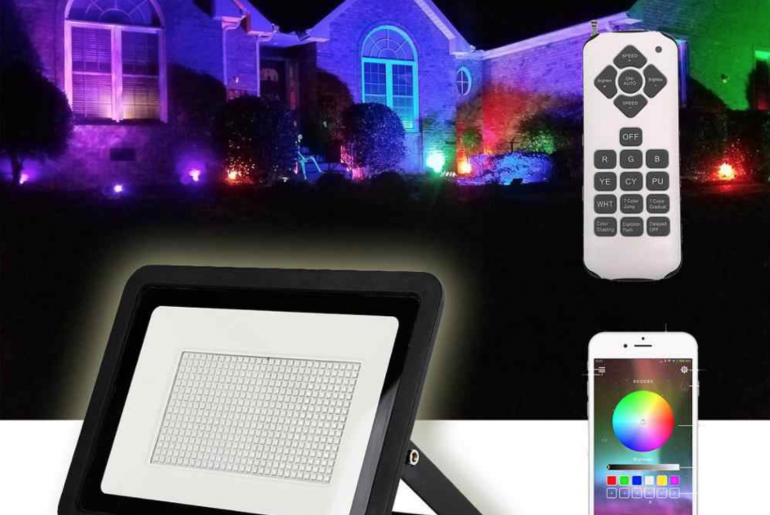The technological advancements in the field of electronics have come a long way. Scientists have always been trying something new and most of them have ended up making wonders. The LED light was one of the wonders, reported in 1962. Over time, LED lights have been growing very popular and now a remarkable range of LED lighting is available that not only brightens up your space but is energy efficient as well. LED Floodlights are one of them.
LED floodlights, as their name suggests, enrich an area with highly intense light to brighten up the surroundings. They come in a variety of styles and designs and are tough enough to withstand extreme environmental conditions. They are used for security purposes at numerous residential and commercial areas. The greatest advantage of brightest outdoor LED floodlights is that they eradicate the use of many light bulbs because they can easily cover a wide place removing all the darkness around.
To make the most of these light fixtures, experts suggest the following factors to be kept in mind while buying a LED floodlight.
Presence of LED chips
Two types of LEDs are very popular, surface mounted (SMD) and chip-on-board (COB). The former lasts much longer than the latter. SMD LED floodlights are wireless, have smaller LED chips, provide less fuss and can be operated at a much lower temperature. In this way, there are little chances for an SMD LED floodlight to burn out. On the other hand, COB LED floodlights have a bare LED chip which is directly in contact with the substrate to fabricate LED arrays. Thus, they are at a greater risk of burning out soon.
Wattage
Buyers should never work off the wattage of the LED floodlights. It is the operating power which eventually affects the brightness and coverage of the light. Each LED floodlight is different from the other and thus runs differently. The higher the wattage, the brighter will be the light but it will consume more power too.
The angle of the beam
Almost all the LED floodlights have a wide beam angle of about 180 degrees. Also, the higher up installation of the LED light increases the angle of the beam. Therefore, to have a wider and brighter view, the experts suggest setting up one big LED light in the center of the building or two smaller lights on either side.
Sensor and color temperature
Sensor LED floodlights are a great choice because they save power and energy. The sensor allows you to modify the sensitivity and time of the floodlight. For example, a dusk to dawn sensor will allow the light to turn off at sunrise and come back when it is dark. Furthermore, the color temperature of the light is a must factor to consider as well. It refers to the spectral properties of the floodlight and is denoted by Kelvin-K. High color temperature is colder while the low color temperature is warmer. If one wants the application to be warmer than a 4000 K will be suitable otherwise a 5500 K will be the appropriate choice.
IP rating and finishing of the light
IP rating accounts for the solid protection of the LED floodlight. Higher IP rating means the minimum entry of water and dust into the light fitting. Furthermore, LED floodlights come with a number of finishing options like stainless steel, copper, and colored gloss on top of aluminum. Buyers usually find it difficult while choosing the perfect outdoor light for their place based on finishing. The one solution to this problem to pick the floodlight that matches the structure and design of your place. In this way, the light can add to the physical appeal of the area.
Your money is very precious so don’t just waste it anyway. Consider the above-mentioned factors before buying a floodlight and choose the one that fits in the best!

